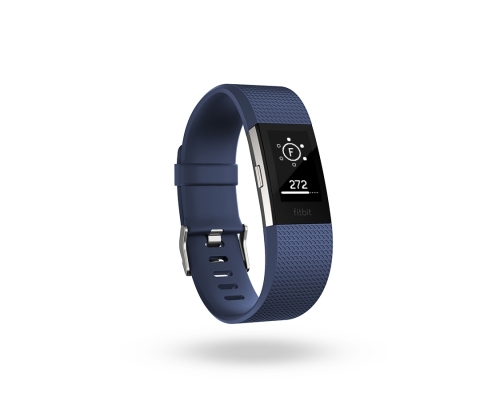
Health technology and clinical wearables are hot topics in the healthcare and pharmaceutical industries. They are creating waves of excitement and talking points for debate, while also topping many of the healthcare trends of this year.
One source suggests that 2018 will be the year of digital health technology, and it is quickly becoming apparent that clinical wearables are one of the most sought-after innovations when it comes to digital health. With the market growing and diversifying in compelling ways, it is worth looking at how clinical wearables are improving access to treatment, enhancing quality of life, and helping with the diagnosis and prognosis of certain conditions.
What are Clinical Wearables?
Clinical wearables can be defined as health technology that can be worn by the patient. The wearables contain sensors and use a wireless connection to pass data onto a smartphone or similar device. Wearables are being utilized in the healthcare industry in order to help healthcare practitioners collect, analyze, and leverage patient data for clinical trials, while also significantly improving patient care and overall quality of life.
Clinical wearables aim to diagnose conditions earlier, minimize hospital stays and reduce invasive treatment options. In addition to this, they can help to cut medical cost and speed up rehabilitation times.
How is the Market for Clinical Wearables Growing?
As the years progress, the potential and ultimate value of clinical wearables is becoming more and more evident, which is why the global wearable medical devices market is set to reach $19.5 billion by 2021. In fact, health technology in general is a booming industry, growing by nearly 200% between 2010 and 2014. There now exist over 165,000 health-related apps on the Apple App Store, demonstrating just how in-demand this new form of technology is.
Behind this surge in popularity are a number of factors, including an aging population, an increased patient interest in healthcare and medicine, and lifestyles that are generally more stress-inducing or challenging. Patients are no longer content to simply let medical professionals take the steering wheel with regards to their health. They want to have a say in their patient care and they want a more personal experience. This is where clinical wearables come in to play.
How do Clinical Wearables Impact Patient Care and Quality of Life?
Clinical wearables can help with disease management, monitoring and feedback, rehabilitation and health processes. The use of such wearables can help when it comes to the diagnosis and monitoring of a range of diseases (which will be mentioned below). Wearables can also help patients when it comes to adhering to a care plan, reminding them to take drugs, to calm down, or to seek help.
The data collected by wearables is even being used to assess the effectiveness of new treatment plans while building mutually-beneficial relationships between doctors and patients. According to one study, of the patients surveyed, 96% of the respondents agreed that the use of clinical wearables helped to improve quality of life. There is also evidence to suggest that the use of wearables can even help to improve the wellbeing of the patient’s family.
Clinical wearables are being used to treat a range of diseases and disorders
Over the years, there have been huge strides in the field of clinical wearables, and today they are being used to monitor and treat a myriad of diseases and disorders. The hope for many is that the data collected from these devices can go on to not only help individual patients, but to resolve widespread pharmaceutical market access issues.
Sufferers of asthma attacks now have access to an integrated wearable system that can monitor an individual’s environment, meaning it is possible to predict — and even prevent — asthma attacks.
Wearables are being used to help with the treatment of diabetes. In fact, researchers from the University of Texas have created a clinical wearable tool that measures diabetes-related compounds in patients’ sweat, which can be monitored for up to a week. The creators believe that the wearables give patients more control over their care.
Wearables are also being helped to monitor Chronic Obstructive Pulmonary Disease (COPD), as they are able to track a patient’s heart rate, blood pressure, blood oxygen saturation, and glucose levels.
It has recently been stated that the future of improved brain health can be achieved through digital health technology. This is certainly something we’re seeing with Alzheimer’s patients, of whom there are an estimated 47 million worldwide. With the use of wearables and patient monitoring devices, patients are now able to stay at home for longer, with the use of sensors that are placed around the individual’s home and on their body. The impact on quality of life is incredible, as the monitors are able to detect if patients miss a meal, have a fall, or don’t emerge from bed.
Atrial fibrillation (AFib), the most common heart arrhythmia and a leading cause of strokes, is also being monitored by clinical wearables. The Apple Heart Study app is being used by AFib patients so doctors can monitor data on irregular heart rhythms. This is important as, incredibly, two out of three strokes are actually preventable if AFib is detected and appropriately treated.
On top of the disorders and diseases listed above, there are conditions such as obstructive pulmonary disease, Parkinson’s disease, and hypertension that can be improved and monitored with the use of wearables. As we move forward and technology and medical research advances, it is likely that this list will grow significantly and that patients will benefit from improved care and quality of life.
Behsad Zomorodi is the Founder and CEO of phamax: a Swiss pharmaceutical consultancy that is passionate about simplifying healthcare market access complexities. Behsad has over two decades of industry and consulting experience in the healthcare sector. At phamax, Behsad heads long-term strategic planning, business development, and investor relations.

